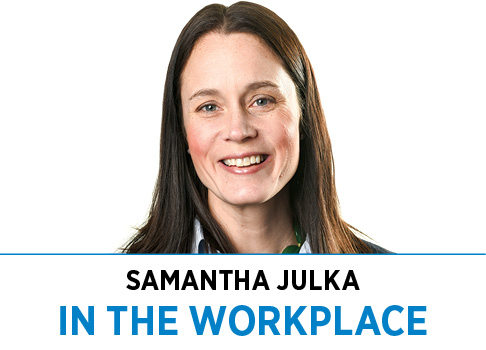Subscriber Benefit
As a subscriber you can listen to articles at work, in the car, or while you work out. Subscribe Now What’s great about hybrid cars? Easy: They’re more efficient and save energy. While this value proposition might be true for cars, it doesn’t necessarily mean a hybrid work environment will drive (see what I did there?) your business forward. In fact, it could do the opposite.
What’s great about hybrid cars? Easy: They’re more efficient and save energy. While this value proposition might be true for cars, it doesn’t necessarily mean a hybrid work environment will drive (see what I did there?) your business forward. In fact, it could do the opposite.
What do I mean when I say hybrid model? I’m talking about organizations that either enable people to choose where to work or mandate some of their workforce stay at home while others come to the office. Right now, and for the past several months, a hybrid model is one that many of our clients have adopted in an effort to keep employees safe during the pandemic.
DORIS was recently commissioned to do a study that focused on the effects of remote work around several key factors, including collaboration and creativity. The effects on these factors are greatly varied when working from home versus in the office. What’s interesting is that the biggest challenge wasn’t specific to working from the office or home, but in trying to do both.
While you might be able to experience the best of both cars in a hybrid vehicle, the same doesn’t necessarily ring true for organizations that are trying to split their workforce between home and the office. Instead, our findings indicate that the hybrid model is the least efficient and takes the most energy to execute well.
To this end, it’s important to note that a hybrid model is not all bad. It is wonderful when considering longer-term business drivers like employee morale and productivity. Through our research, we have been able to prove that the flexibility afforded to an employee working inside a hybrid model is very favorable. Employees appreciate and value the power to choose where they will execute their work for the day. Many also noted that this hybrid model drives individual productivity, because employees can gauge their own appropriate balance between availability and focus time.
However, where the hybrid model breaks down is in efficiency. Based on the data we’ve collected, it is proven that it takes a significantly higher amount of energy for organizations to collaborate and strategize, as well as be more innovative and creative, when working in a hybrid model. When everyone is in the office, the physical space can inherently facilitate collaboration, especially through impromptu encounters. This takes the burden of planning and engaging in collaboration off of the individuals. It fosters an environment where more people have an opportunity to be included.
The same is true for organizations in which everyone is working remotely. This is because the rules of engagement are static for everyone. When everyone works remotely, for example, it’s impossible for a small group of people to have what we like to call “The Meeting After The Meeting.” You know, the most important 15 minutes AFTER a scheduled meeting where everyone hangs around and informally starts to talk shop. If this happens when everyone is remote, it’s just another digital meeting.
Let’s take the same example and look at it through the lens of the hybrid approach. Some people are in the office and some are remote. The people in the office finish their scheduled meeting and end communication with those who are remote. Then they may unintentionally begin “The Meeting After The Meeting,” thereby excluding anyone who is not there in person. It would take a great deal of awareness, intention, effort and energy to bring in someone who is remote. Situations like this can lead to communication breakdowns and larger problems on the horizon.
It’s important to consider the nuanced difference between efficiency and efficacy. Our research shows that the hybrid model is less efficient and requires more energy to execute. However, that doesn’t mean a hybrid model can’t be done well. If a business understands its business drivers, company values and current work style well, a hybrid model can be an effective way to create long-term culture benefits—although it might take more work in the short term.
As a business leader, when choosing between efficiency and efficacy, more often than not, I choose the path that is more effective for my business overall. Not only do I consider where and how employees are going to get work done, but also the type of environment that best facilitates the type of work that needs to be done in order to drive our business forward.•
__________
Julka is founder of Indianapolis-based DORIS Research, which uses design thinking to organize workspaces.
Please enable JavaScript to view this content.
